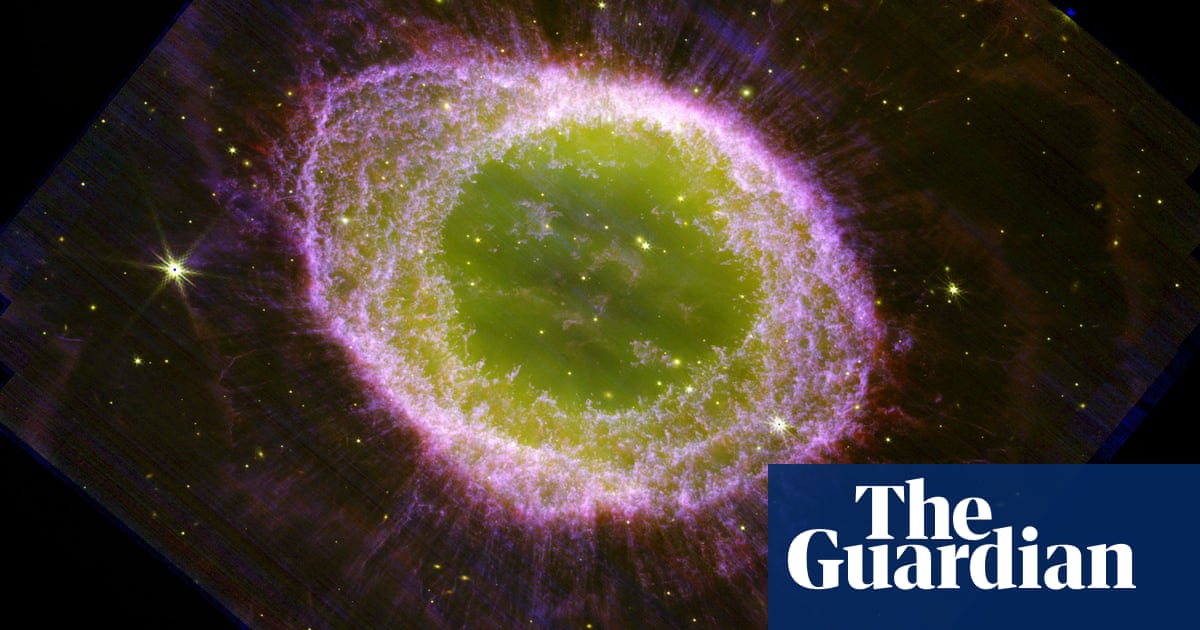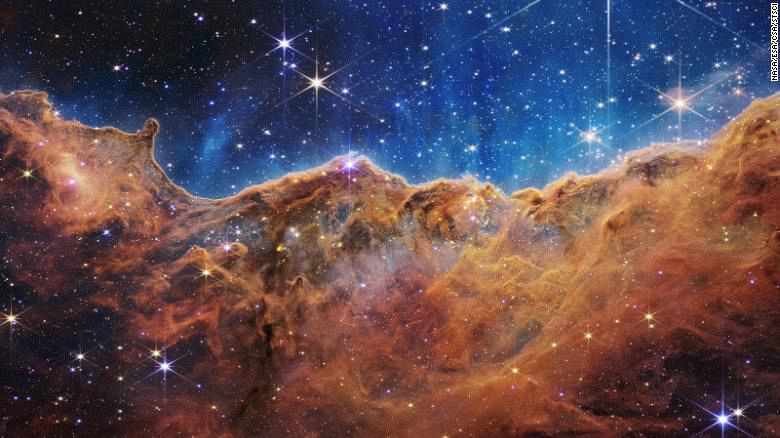
Astronomers have hailed the beginning of a new era of space observation after Nasa unveiled a flurry of full-colour images from the James Webb space telescope, the largest and most powerful space-based observatory ever built.
The pictures from the sun-orbiting instrument brought delight – and no end of relief – for researchers who have waited decades for the project to come to fruition and embark on its mission to transform our view of the cosmos.
After the first image was released at a White House briefing on Monday, the US space agency published further pictures from its Goddard Space Flight Center in Maryland on Tuesday amid cheers and howls of approval.
The pictures provide a tantalising glimpse of the observatory’s potential to look back to the dawn of time, probe the deep structure of the universe, and allow the study of atmospheres wrapped around planets far beyond the solar system.
“I am so thrilled and so relieved,” said Dr John Mather, Nasa’s senior project scientist on the mission. “This was so hard and it took so long. It’s impossible to convey how hard it really was … but we did it.”
Dr Bill Ochs, Webb’s project manager, said the telescope was in “excellent shape” and meeting or exceeding its scientific requirements.
The “deep field” image released on Monday showcased Webb’s ability to harness the gravitational forces of galaxy clusters to magnify far more distant galaxies behind them. The picture of the SMACS 0723 galaxy cluster, nearly 5bn light years away, brought galaxies into focus as they were more than 13bn years ago.
Analysis of light from one of the galaxies revealed its chemical makeup, a first for such a distant galaxy. “We’re seeing these galaxies in detail we’ve never been able to see before,” said Dr Jane Rigby, an operations project scientist on Webb.
In the second image, Webb analysed starlight as it passed through the atmosphere of a hot Jupiter-like planet called Wasp-96b, about 1,150 light years away. This revealed the presence of water vapour, though the planet is too hot to harbour liquid water. Astronomers will use the same approach on smaller, rocky planets in the hope of finding worlds where conditions are ripe for life.
Further images captured the Southern Ring nebula, a vast cloud of gas hurtling away from a dying star about 2,000 light years from Earth. An unexpected streak in the image mystified some on the Nasa team. On closer inspection it was found to be another galaxy, viewed edge on.
Perhaps more thrilling was the discovery in an image of Stephan’s Quintet, a tight cluster of five galaxies, of an active black hole. While the black hole itself cannot be seen, there is material swirling around it being swallowed by the cosmic monster.
The final image, of a breathtaking stellar nursery called the Carina nebula, is so rich in detail that researchers could discern bubbles, cavities and jets blasting out of newborn stars, along with hundreds more stars they had never seen before. “We see structures that we don’t even know what they are,” said Dr Amber Straughn, a Nasa astrophysicist.
The collection of deep space images mark the official start of science operations for Webb, which encountered major delays and cost overruns before it reached the launchpad. Since it blasted off in December, scientists have endured a nailbiting six months as the observatory has unfolded, deployed a sunshield the size of a tennis court, and aligned its 18 gold-plated mirrors en route to its destination 1m miles from Earth.
“The unprecedented detail and resolution of the images will be transformational for astronomy and provide a much deeper understanding of the universe than we currently have,” said Martin Barstow, a professor of astrophysics and space science at the University of Leicester.
Developed in collaboration with the European and Canadian space agencies, Webb uses a 6.5-metre primary mirror to detect the feeble glimmer of some of the oldest and most distant stars in the cosmos.
Because the universe is expanding, light from distant objects is stretched out, “redshifting” it to longer wavelengths. When visible light is stretched into the infra-red, it can be detected by Webb’s instruments, which are three times sharper and 100 times more sensitive that those on Hubble.
“The performance is superb,” said Prof Gillian Wright, director of the UK Astronomy Technology Centre in Edinburgh and principal investigator for the mid-infrared (Miri) instrument on Webb. “We’ll be able to do all the science we want to do and more. When we’ve talked about being able to directly image planets around other stars, we know we can do that now.
“The job now is choosing which stars to look at and which planets to take images of, not whether the telescope is capable or not of doing it. It’s more than capable of doing that kind of science, superbly well.”












